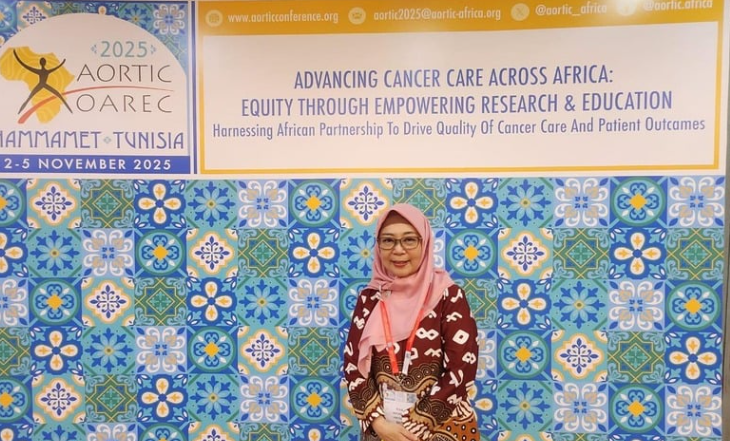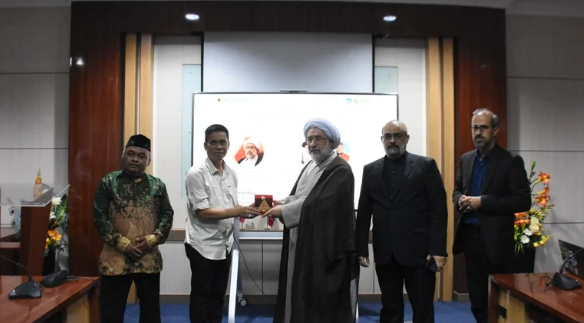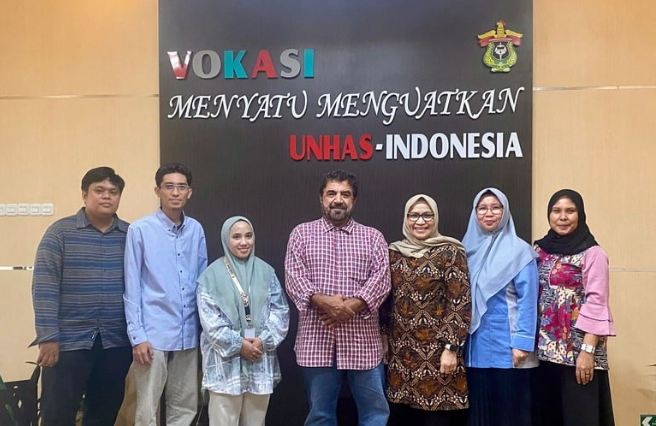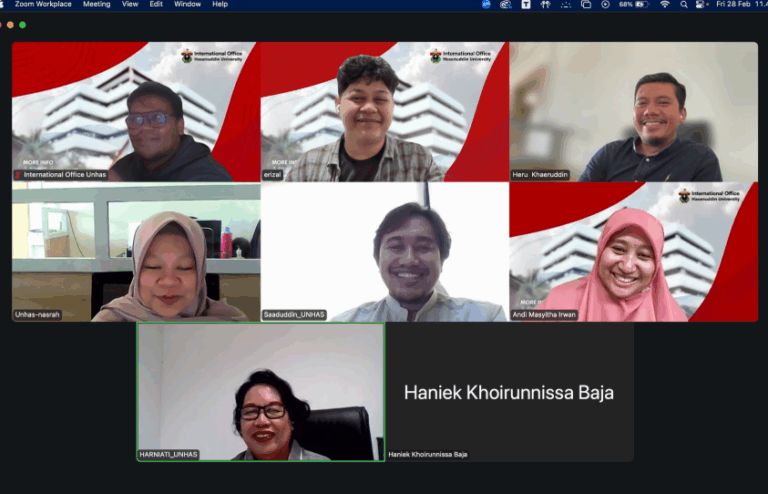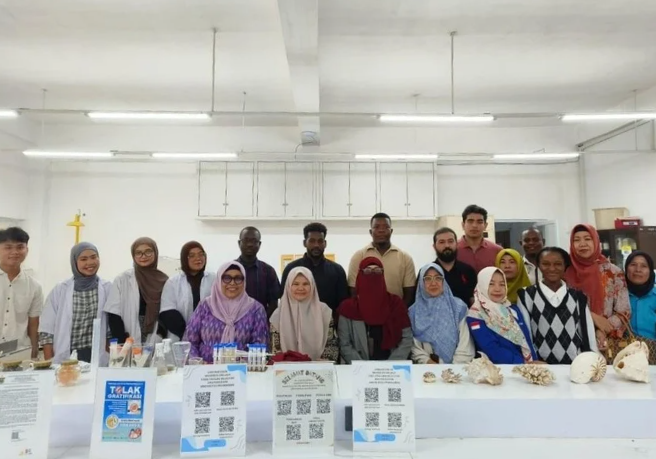Universitas Hasanuddin, through the Department of Archeology, Faculty of Cultural Studies (FIB Unhas), in collaboration with the Archaeological Research Center of Universitas Sains Malaysia (USM), held an International Webinar with the theme “Besse: A Hunter-Gatherer Toalean Woman from Wallacea”. The activity took place virtually through the Zoom meeting application on Friday (03/12).
The event invited three speakers, Prof. Dr. Akin Duli, MA (Dean of FIB Unhas), Prof. Adam Brumm (Research Center for Human Evolution, Australia) and Dr. Hasanuddin (South Sulawesi Archeology Center).
Starting the activity, the Head of the Archeology Department of FIB Unhas, Dr. Rosmawati, S.S., M.Sc., expressed her gratitude for the willingness of the speakers to share their study. He said that this webinar was exciting to follow and discuss, considering that the findings have become a noticeable topic of the academic community globally and have changed interpretations of the history of human evolution.
“The discovery of the ancient human skeleton, Besse, is a supporter of culture and a new understanding of the migration path of Indonesian ancestors and will certainly have an impact on the writing of Indonesian history. We hope that this forum can be developed to encourage other research,” explained Rosmawati.
The activity was officially opened by Prof. Ir. Sumbangan Badja, M.Phil., PhD, the Vice-Rector for Planning, Finance and Infrastructure of Unhas. He said that this webinar has contributed to the development of culture, including many scientific aspects in archaeology, social science, and natural science.
“This webinar is also a way of collaborative research to examine other cultural-historical findings. I hope this activity can be followed properly to understand in-depth the history of the Wallacea region through the findings of the Besse framework,” said Prof. Sumbangan.
After the opening, it continued with the presentation from Prof. Akin Duli on “Human Besse Supporting Toalean Techno-complex Culture in Sulawesi”.
Prof. Akin said Besse’s skeleton was found after excavations at the prehistoric site Leang Paningnge, Mallawa District, Maros Regency, in 2015. The selection of the excavation site was based on community reports supported by a strategic position in the form of a cave flanked by a river.
“The results of DNA extracts from the petrous bones of Besse’s skeleton, estimated to be 17-18 years old, associated with the Toalean technocomplex, prove that the skeleton contains genetic similarities and deviations and the most morphological similarities with Papuan and indigenous Australian groups today. However, it also represents a line “Previously unknown different human ancestry branched off around the time of the separation between populations about 37,000 years ago. In this framework also found Denisovan DNA that has never been identified,” explained Prof. Akin.
Prof. Adam Brumm discussed “A Toalean Tale: Recent Insights into the Enigmatic Hunter-Gatherer Culture of Holocene South Sulawesi”.
Prof. Adam explains that many things remain unknown about the history of early modern human populations in Southeast Asia. The archaeological record is sparse, and the tropical climate contradicts the preservation of ancient human DNA. So far, only two low-coverage pre-Neolithic human genomes have been sequenced, both originating from mainland Hoabinhian hunter-gatherer sites.
“The discovery of the Besse’s skeleton provides an overview of the cultural process that can be seen from the prehistoric tools that have been obtained. This provides an interesting picture for further study,” explained Prof. Adam.
The presentation session was closed by Dr. Hasanuddin, who explained several other findings in Maros Regency.
After all the speakers expressed their views, it was followed by a discussion and question and answer session. The activity was guided by Prof. Dr. Stephen Chia (Director of the USM Malaysia Archaeological Research Center).
Kumara Tungga Dewa, S.S.
Editor : Ishaq Rahman, AMIPR

